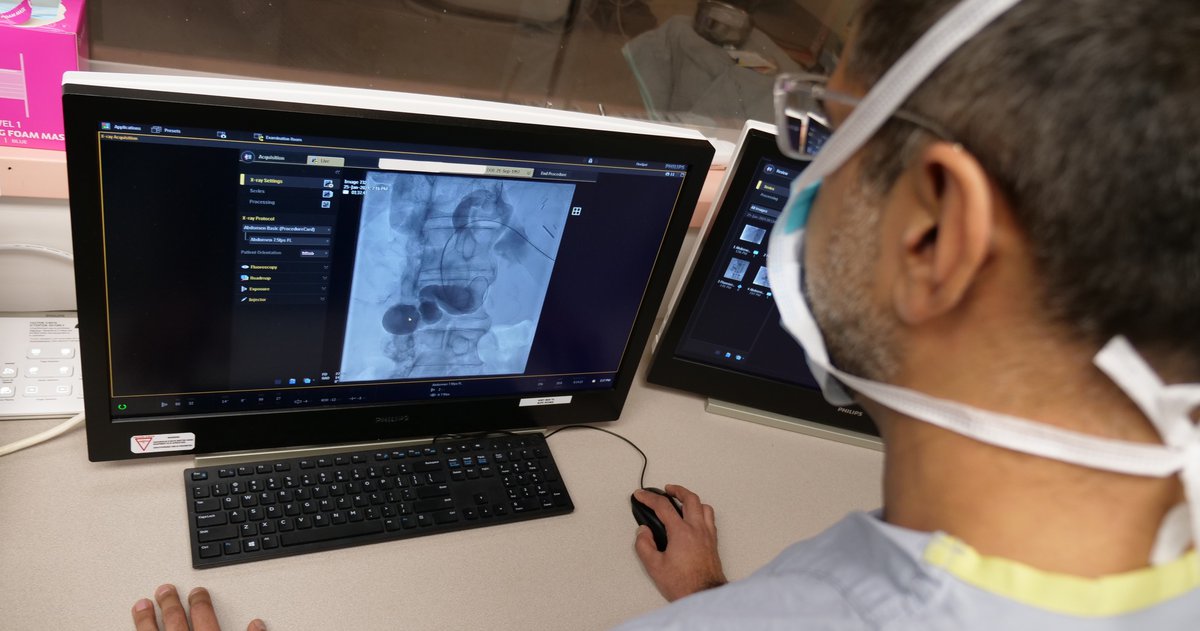In this issue of Alberta Doctors’ Digest, we are pleased to continue our series on the Foundation Stones of Medicine.
When walking across the floor of a building, we may not be aware of the foundation stones that keep it in place. Similarly, patients travelling across the health care system are often unaware of the intricate structure of specialty care that lies beneath what they see on their individual journeys.
So we are featuring an ongoing series of articles highlighting some foundational specialties. We think the perspectives of these colleagues will be illuminating for the public and perhaps even for medical professionals.
For the current issue, we introduce diagnostic imaging.
Radiologists are physicians who oversee the acquisition of diagnostic imaging tests and the interpretation of the resulting studies. Diagnostic imaging tests include x-rays, ultrasounds, MRIs and nuclear medicine studies. The radiologist’s role is vital in ensuring that images are acquired appropriately and then interpreted for timely diagnosis for Alberta patients.
Dr. Rahim Samji is the Vice President of the Section of Diagnostic Imaging for the Alberta Medical Association. His sub-specialty is interventional radiology, where minimally invasive therapies help patients achieve better outcomes.
“What we end up doing after we’ve acquired these images is we plan procedures for patients,” explains Dr. Samji. “These can be as complex as stroke interventions. Someone who has a stroke comes into the hospital and we want to relieve them of their symptoms – we can actually treat the stroke by using endovascular therapy. And that’s done by interventional radiologists.” Other procedures can include taking a biopsy of a cancer in a liver and treating the liver tumour with minimally invasive curative therapies.
“It’s really important work because with the minimally invasive therapies the interventional radiologists use, it decreases the hospital stay for patients. It decreases the overall morbidity, and complication rates are much lower with minimally invasive therapies. And it also allows the patient to undergo therapies that would require very minimal sedation or anesthetic.”
Interventional radiologists also care for their patients along the way and have an outpatient clinic. Dr. Samji explains that patients are seen in clinic and then following clinic, procedures are organized in the hospital setting as well as follow-ups with patients back in clinic. “Although I’m a radiologist, and most people's perception of radiologists is one that might interpret images and sit in front of a computer, we actually have an outpatient-clinic-based practice. Seeing patients firsthand. Treating those patients in our hospital setting and then going on to follow them up.”

In Alberta, he notes, there are resource limitations and challenges with practicing radiology throughout the system. “There is a limitation because of the fact that we don’t necessarily have new CT, MRI, ultrasound departments opening up to meet some of the demand of our growing population, and I think that’s something that we in medicine struggle with in many different areas.”
So what changes would Dr. Samji like to see made to the health care system for it to be more effective for patients?
“One of the important things would be to have patients who are in rural settings be able to access expertise in urban settings with ease.” He further explains this should include imaging studies that are done in rural Alberta being transferred to an expert in an urban centre for interpretation.
According to Dr. Samji, the majority of studies done in rural communities are read by local general radiologists or general practitioners. “To give those that are in rural Alberta the same access as those in urban centres would be relatively easy in radiology because of the ability to transfer imaging electronically.”
Dr. Samji mentions it’s crucial that radiologists who are trained through the Alberta residency programs in Calgary and Edmonton are retained within the province. He also stresses that it’s important to have a plan for both infrastructure and the increase in provincial population.
“It’s important to acknowledge the increase in our population and to acknowledge that there would be an increased demand on diagnostic imaging. That would require more diagnostic imaging centres, specifically in the hospital settings for MRI and CT, which are quite high in demand.”
Dr. Samji concludes by emphasizing one more thing: “Alberta has spent quite a great deal of effort in trying to lead the country when it comes to innovation. We have great colleagues that we interact with regularly. We find the support from colleagues is exceptional and working in the environment where innovation is valued is important.”
Banner image: Dr. Rahim Samji (photo credit: Marvin Polis)
